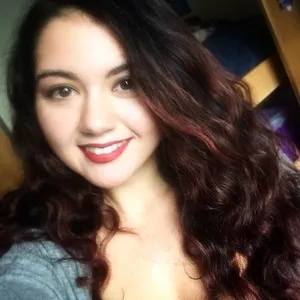The first time walking into a boba cafe can be overwhelming. I felt totally lost the first time I looked at the never ending menu of creamy smoothies, iced lattes, and tropical teas. When I finally figured out what to order, the cashier asked if I wanted boba. Even though I didn’t really know what it was, I felt highly pressured to keep the line moving, so I said yes. Little did I know that was the start of my boba addiction. If you’re new to the world of bubble tea, here are the five basic types of boba to guide your decision during your first bubble tea purchase.
1. Black Boba

Boba, in the generalized sense, is tapioca pearls. Also called bubbles or pearls, black boba is found in mostly milk-based bubble tea. One of the “standard boba pearls,” black boba, is made from the cassava root. The black coloring is created by added brown sugar or caramel coloring. In other words, black boba is simply tapioca with added coloring that makes it sweeter. The first taste of black boba can be a surprise. The texture is chewy and bouncy, with an almost licorice flavor to it.
#SpoonTip: The Thai bubble tea at Tea-Do in Boston’s Chinatown will change your life.
2. Clear Boba
While the brown sugar in black boba gives a hint of extra sweetness, clear boba is straight starch from the cassava root. Clear boba is relatively tasteless on its own, which is why it’s used in most milk-based bubble teas. The tapioca pearls are able to absorb the milk and flavor of the tea, thus becoming one with the flavor of your tea. Therefore, if you order a chai bubble tea, the black or clear boba pearls will taste like chai too.
3. Flavored Tapioca Boba
Flavored boba is traditional boba pearls that have been cooked in or coated with a flavored syrup. The flavors can range from fruity flavors, such as mango and strawberry, to exotic flavors, such as coconut and aloe. Note that flavored tapioca pearls are also called jelly pearls at some cafes. These pearls are used in smoothies and classic brewed teas (black or green tea). Flavored boba is also known to be an ice cream or fro-yo topper.
4. Popping Boba
Similar to the Gushers fruit snacks we all wanted in our lunch boxes back in the day, popping boba is infused with a flavored surprise. This type of boba (also called juice balls) is created through molecular gastronomy. This type of cooking involves taking flavored fruit juices and mixing them with powered sodium alginate. The mixture is put into a bowl filled with a cold calcium chloride. Add spoonfuls of water, and you’ll see bubbles that will soon become boba balls.
Popping boba is popular for its burst of real fruit juice when chewing, bringing the idea of flavored boba to the next level. However, popping boba differs from flavored boba because it is not tapioca. Again, popping boba is created through a chemical and physical reaction to calcium. Popping boba is mostly used in smoothies and shaken iced teas.
5. Mini Boba
We’ve returned to the world of traditional boba: tapioca boba. Mini boba is exactly as it sounds—it’s a smaller version of black, clear, or flavored boba. If you find that normal-sized boba is too hard to drink up with a straw or too annoyingly chewy, mini boba may be the perfect option for you. Mini boba cooks faster due to its smaller size and is easier to chew. It’s the perfect dainty topping for fro-yo or a sweet surprise in any flavor bubble tea. The picture above shows the difference between mini boba (the green tea) and regular boba (the tan tea).
Hopefully now that you know the five basic types of boba, your next bubble tea adventure will be less overwhelming. If you’re in the downtown Boston area, I highly recommend Tea-Do and My Thai in Chinatown. Try not to go during the late hours of the night on a weekend though, the line extends out the door! However, the bubble tea is well worth the wait. Get yourself some extra boba, you deserve it.


